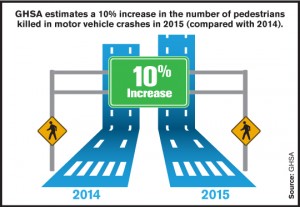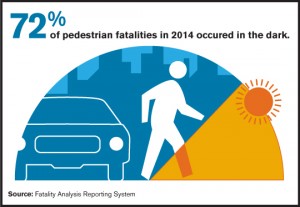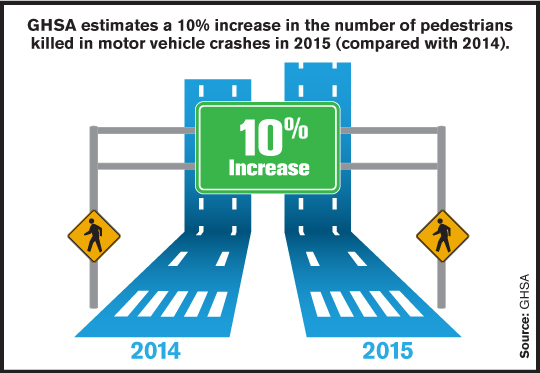 Remember when your mother told you to be careful crossing the street? This advice rings true now more than ever, in light of a new federal report that says pedestrian deaths are increasing nationwide at a startling rate.
Remember when your mother told you to be careful crossing the street? This advice rings true now more than ever, in light of a new federal report that says pedestrian deaths are increasing nationwide at a startling rate.
According to the Governors Highway Safety Administration (GHSA), nearly 2,400 pedestrians were killed in the United States during the first half of 2015. This is a 10 percent increase over the same time period in 2014. When all the numbers are compiled, the GHSA says 2015 will see the largest year-to-year surge in pedestrian fatalities since national record-keeping began in 1975.
Twenty six states and the District of Columbia had a greater number of pedestrian deaths during the first six months of 2015. Meanwhile, 21 states reported decreases in pedestrian fatalities throughout early 2015, including Michigan, which had 9 percent fewer pedestrian deaths.
Another unnerving statistic is that pedestrians now account for 15 percent of all vehicle crash-related deaths. Ten years ago, this figure was 11 percent.
The report suggests the increase in pedestrian fatalities can be attributed to several factors, including:
- More people are traveling by motor vehicle, due to a better economy and lower gas prices.
- More walkers and drivers are using – and being distracted by – cell phones.
- Although today’s vehicles are more “crashworthy,” pedestrians are still just as susceptible to injury.
- An increasing number of people are walking for health, economic, or environmental reasons.
What factors contribute to pedestrian fatalities? The top ones are: 
- Time of day – most pedestrian deaths occur after dark.
- Alcohol – about half of pedestrian fatalities involve alcohol (either the driver or the walker).
- Age – pedestrian deaths are higher for people age 70 and older.
- Junction type – most pedestrian fatalities happen at non-intersection locations.
In the meantime, states are implementing various strategies to help reduce pedestrian deaths. Currently, Michigan is addressing pedestrian safety in several ways, including a statewide analysis of pedestrian and bicyclist crashes. The analysis, conducted by Western Michigan University, is looking at crash causation, best practices, and countermeasures to help decrease fatalities and injuries.

